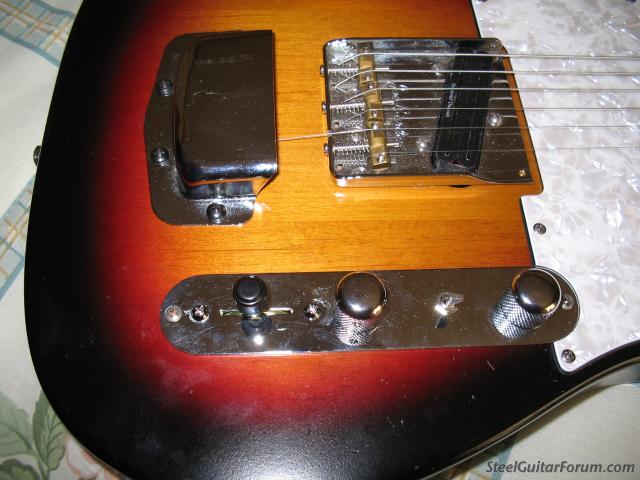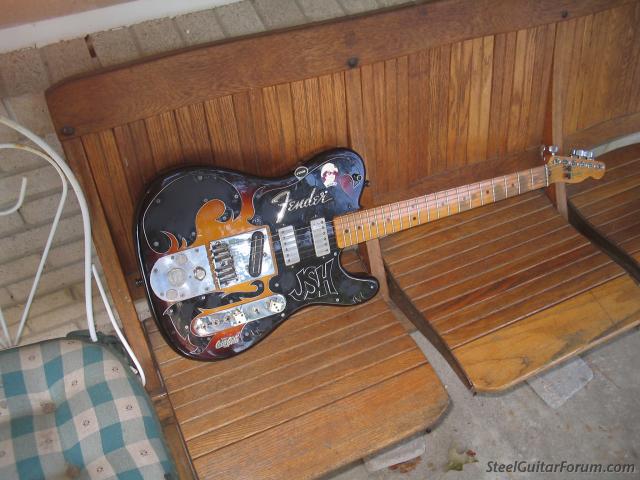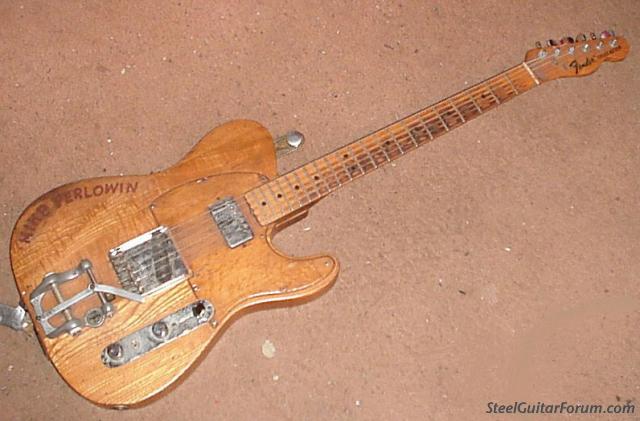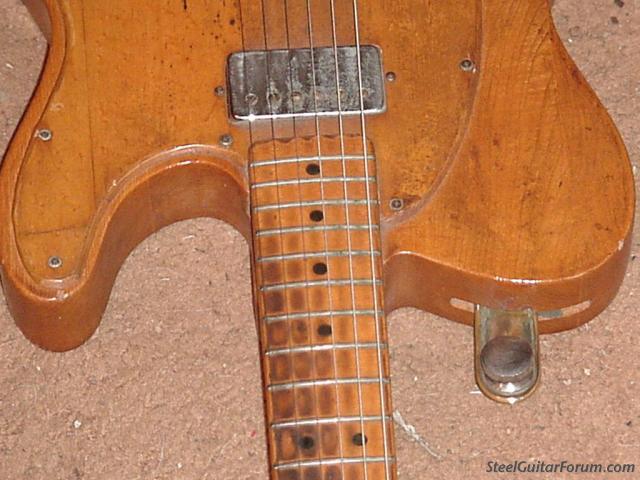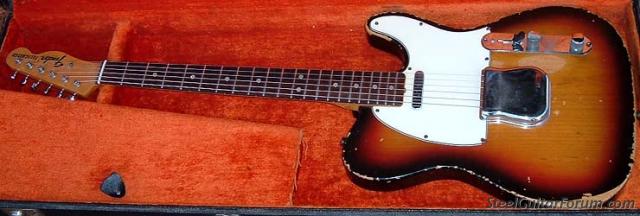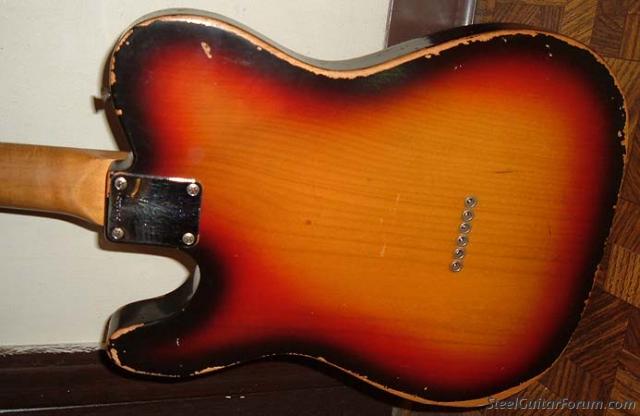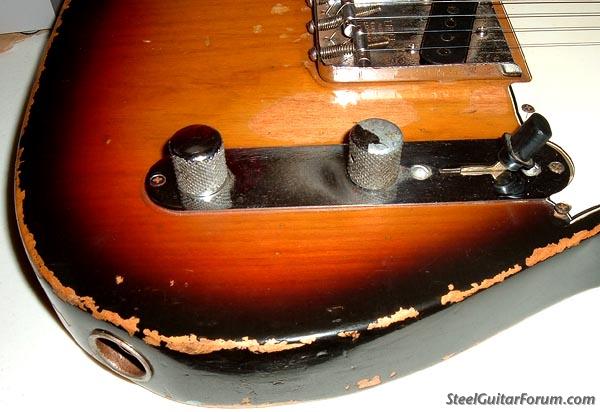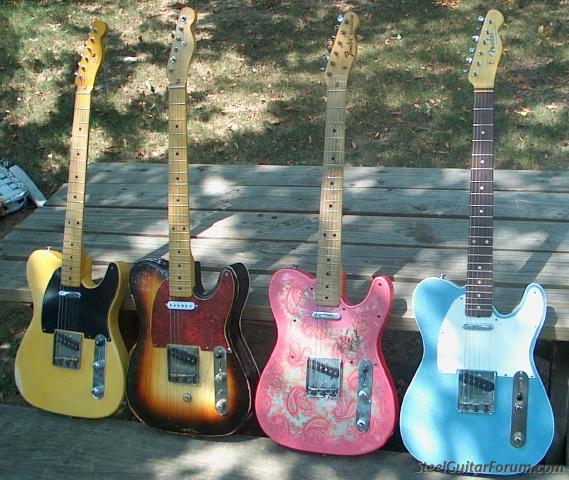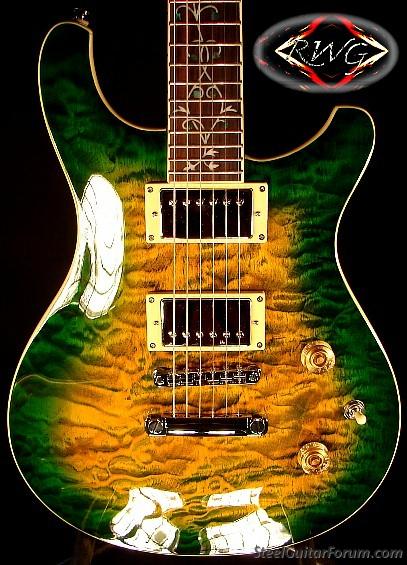To begin with, I'm not an "industry tele guy". I've been playing couch guitar for the whole time I've been playing PSG, and only got back seriously into it on the bandstand a couple years ago.
I'm just now at the point where I'm not taking constructive critism like I did for too many years on PSG. (It always comes from people that need too much of it themselves..)
Enough about me..
This Tele knock off is flooring me as much as the Fender Squiers that fill my music room. More in some ways.
I have NO idea how so much work and craftsmanship goes into this new wave of guitars. Let alone "for the money".
Inasmuch, I can't and won't compare this Laminated Neck Thru exotic wood string-thru-body gem to my other guitars.
To begin with, I'll list the things I "don't like" about it as I go. That's fair, though I'm usually not "fair".
Fairness, as they say, is the enemy of justice..
The neck is laminated perfectly, and formed in a "standard" shape. 1 11/16 (1.6875") as close as my dial caliper will measure at the nut.
That said, it is finished well but porous. Just my personal preference, but I like to put the "pores" in myself. It feels "friendly" and maybe moreso than the well worn standards owned and played by friends on the bandstand I've come across. I like a more unfriendly glass finish myself.
The neck otherwise is flawless, frets not protruding at all, and the neck binding is perfect. I'd guess it's not "ebony" but I'd guess rosewood. Inlayed with MOP in a fashion I don't think you could get for 300$ alone. Not gaudy, but a nice little scorpion in addition to the MOP fret markers.
Where it meets the body, in a ramped heel, the 21st fret is TOTALLY accessable to fretting, as is the 22nd, with VERY slight motion.
I think that's the best feature of this guitar, and I have no idea like I said how so much obviously labor intensive things are on this guitar. Like the laminations, I don't see a flaw in ANY of the glue joints, or any filler spots.
The headstock shape and contour where it meets the neck is comfortable and not out of what I'd expect. The shape is a little closer to the F word than I'd do it, but I'm not a lawyer, though I did stay at a...
The top is about 1/4" of beautiful "Bubbinga" wood, that reminds me of and smells like teak, without the weight. Easier to explain by looking at the picture. Unbound, and again, PERFECT lamination, with no filler, or gaps. Maybe the corners are a little sharper than I'd do it, but it only shows, to my thinking, being unafraid of wood defects. My guess is that finding the pieces to match up for the lamination alone would take more time than a lot of guitars take tobuild.
That's what my inital reaction to everything about this guitar was to begin with, and has gotten more clear as I get into it. There has to be more labor in it than any other "thing".
Hardware wise, as above. It's a non ash tray bridge plate which is not my preference. It is thick, and not screwed in at the top like non thru guitars I've checked out. I liked that. String through, like I said, and individual "barrels" as shown on the picture. I like them a LOT. Not wiggly or "tippy". The grover minis are great and solid. Switch is smooth. No "popping" like others, and Volume pots and controls are smooth, and not noisy as some in this "game" seem to be.
Pickups, I'll compare to my others.
I found them closer to "vintage" than my ASAT. More "bite" and slightly less signal though my ASATs are hellishly hot, and a little less brassy. I like them. Not even knowing what they are. Of course they're single coil, and in the B or N setting, they'll buzz like any other single coil when there's a big rheostat around. B/N, the buzz goes away, and the mixture is not muddy. Pretty much "standard".
One thing that does impress the heck out of me is the lack of a switch/knob plate. With a laminate/exotic wood this too takes balls. Not a nick or imperfection in a sharp edged rout. Input is the "ASAT" type, non-cup, which is my preference unless you carry epoxy for sticking the cups back in..
OK.
If it was "my guitar", and I was the one that designed it, I'd put a smaller than strat "rib contour" on it and maybe do a small forearm bevel, though with the 1/4" bubbinga top it'd be a noticed difference. These things would be in line with the contoured heel, and make for an overall picture of "aerodynamics".
Playing wise.
I've played it for a week here on my studies, and at one gig.
I found it to be every but as comfortable and clean as any guitar I've played. The particular guitar I have is set up with an aftermarket "Earvana" nut, which is not my preference, and I like a bone or "graphite" nut better. They just sound snappier, and I don't have intonation problems with any of my guitars with .011s. Besides, I like "sharp thirds". ( Teehehehe.)
Also, the body is 1.625" thick, and it NOT a "heavy guitar". In fact it is lighter than my SSH Squire, and the same as My ASAT Tribute. It weighs 8 lbs. My Indian SSH Fender Squier weighs 9, made out of "Indian Cedar".
"Sustain" is rather subjective, but If this guitar was shown to have more "Ed Packard Graphic Sustain™" I wouldn't be the least bit surprised. Out of the open position "earvana damping" I notice that it's really active, and transfers the vibes as well as anything I've played.
That's about all I can say about this RWG Neck-thru laminate Bubbinga T Guitar.
It's got more hand work in it than I can imagine.
It plays well, and I don't know how they can make this wave of good guitars at the prices I've seen.
In my last couple years, Of these guitars I've bought and played, I'm wondering severely, on the "F" guitars, why they have the extra "1" in front of the price on the tag at GC..
I'd like one of these.
YMMV, of course.

